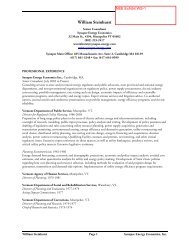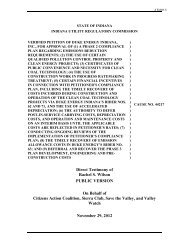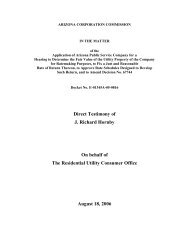Best Practices in Energy Efficiency Program Screening - Synapse ...
Best Practices in Energy Efficiency Program Screening - Synapse ...
Best Practices in Energy Efficiency Program Screening - Synapse ...
Create successful ePaper yourself
Turn your PDF publications into a flip-book with our unique Google optimized e-Paper software.
In general, the fundamental assumption of behavior <strong>in</strong> competitive energy markets is<br />
that generators will bid their marg<strong>in</strong>al cost of produc<strong>in</strong>g electric energy <strong>in</strong>to the energy<br />
market. Their marg<strong>in</strong>al cost is based on the unit’s opportunity cost of fuel, variable<br />
operat<strong>in</strong>g and ma<strong>in</strong>tenance costs, and opportunity cost of tradable permits for air<br />
emissions (<strong>Synapse</strong> 2011, p.2-21).<br />
In New England, natural gas fired units are the dom<strong>in</strong>ant marg<strong>in</strong>al source of generation,<br />
i.e., they set the market price <strong>in</strong> most hours of most years (<strong>Synapse</strong> 2011, p.1-10).<br />
Annual gas use for electric generation <strong>in</strong> New England has been forecasted to grow by<br />
an average of 0.6% between 2011 and 2025, and by an average of 1.3% thereafter<br />
(<strong>Synapse</strong> 2011, p.3-2). Therefore, when comb<strong>in</strong>ed with additional assumptions about<br />
the New England market and natural gas prices, the AESC study projects that avoided<br />
energy costs will <strong>in</strong>crease over time.<br />
The annual avoided energy costs developed by the AESC Study, as well as a s<strong>in</strong>gle 20year<br />
levelized avoided cost, are summarized <strong>in</strong> Figure A.1 (see <strong>Synapse</strong> 2011, App.<br />
B). As presented <strong>in</strong> Figure A.1, avoided energy costs start at approximately $54 per<br />
MWh <strong>in</strong> 2012, and <strong>in</strong>crease to approximately $100 per MWh by 2031, with a levelized<br />
cost of $78 per MWh. The avoided energy costs are weighted by the four energy<br />
cost<strong>in</strong>g periods: summer on-peak, summer off-peak, w<strong>in</strong>ter on-peak, and summer offpeak<br />
(<strong>Synapse</strong> 2011, p.2-1).<br />
Figure A.1. Avoided <strong>Energy</strong> Costs<br />
Avoided Capacity Costs<br />
Similar to energy costs, capacity costs are avoided by efficiency programs due to a<br />
reduction <strong>in</strong> the annual quantity of electric capacity that utilities and competitive suppliers<br />
are obligated to acquire to ensure an adequate quantity of generation dur<strong>in</strong>g hours of<br />
<strong>Best</strong> <strong>Practices</strong> <strong>in</strong> <strong>Energy</strong> <strong>Efficiency</strong> <strong>Program</strong> Screen<strong>in</strong>g | www.nhpci.org | 69







